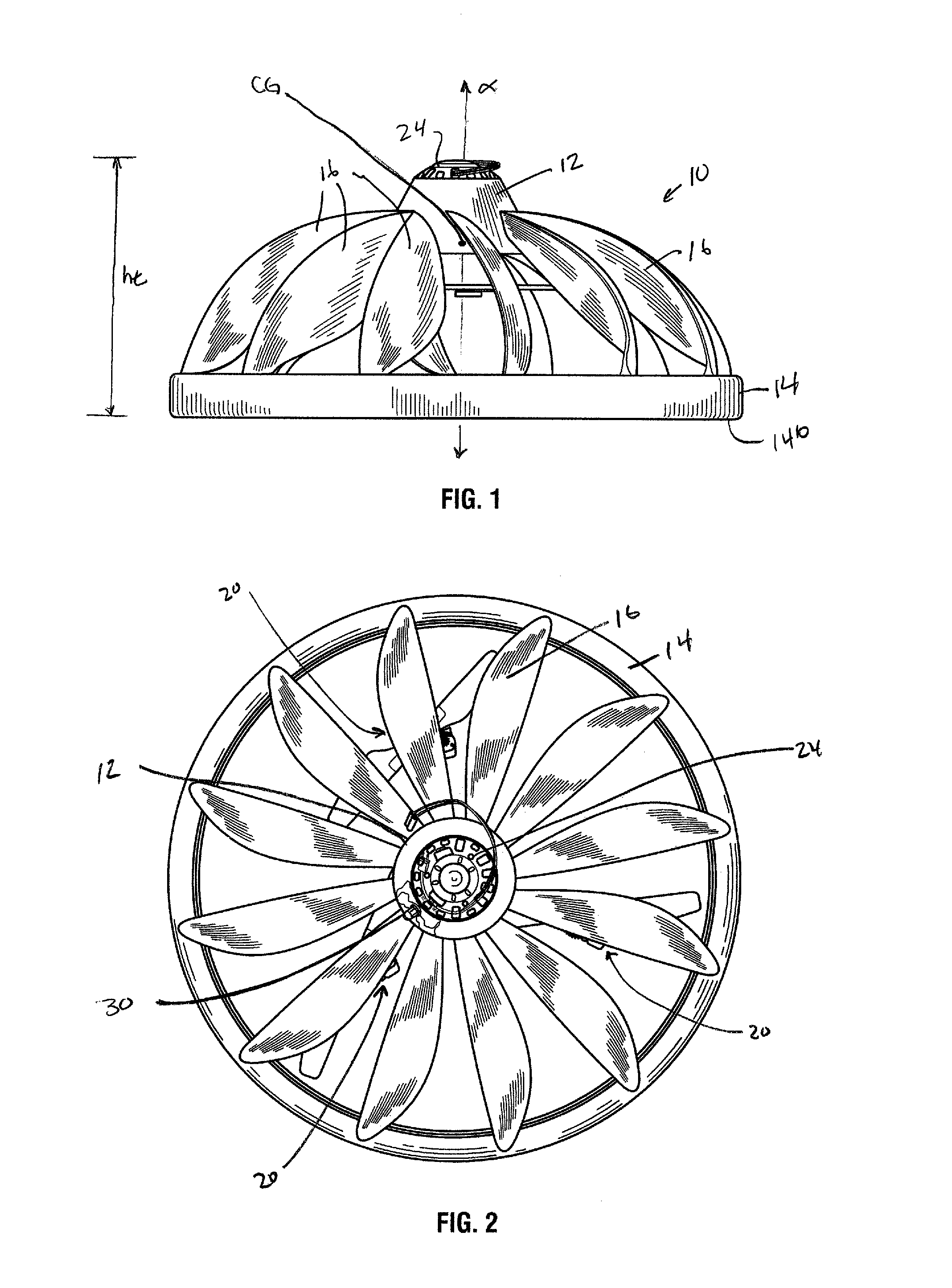Directionally controllable, self-stabilizing, rotating flying vehicle
a flying vehicle, self-stabilizing technology, applied in the field of flying vehicles, can solve the problems of difficult implementation of directional control, great effort still made in the prior art to eliminate or counteract the torque created by horizontal rotating propellers, etc., and achieve the effect of reducing the level of drive signals
- Summary
- Abstract
- Description
- Claims
- Application Information
AI Technical Summary
Benefits of technology
Problems solved by technology
Method used
Image
Examples
first embodiment
[0035]Referring to FIGS. 1 through 3, in the present invention a flying rotating vehicle 10 is provided. The vehicle 10 includes a hub 12 and an outer ring 14. A plurality of blades 16 extend outwardly and downwardly from the hub 12 to the outer ring 14. Separately secured to the underside 18 of three of the blades 16 are rotor assemblies 20. FIG. 4 illustrates another vehicle 10 that has fewer blades 16, further illustrating that the number of blades would not affect that scope of the invention. The placement of and manner of securing the rotor assemblies 20 to the flying rotating vehicle 10 may also change. For example, the rotor assemblies 20 may be secured to the flying rotating vehicle 10 by any means for securing. Such means may include the method described hereinabove, or may include securing each rotor assembly 20 to one or more rods (not shown) that are positioned below the blades and allow the rotor assemblies to be secured to the flying rotating vehicle 10 at a position b...
embodiment 100
[0053]In a first control system embodiment 100, FIG. 9a, a hand held controller 110 transmits a non directional IR signal through IR emitters 112. The non directional IR signal is also encoded with the control inputs from the operator. The position reference of the rotating vehicle is determined by a directional IR receiver 114 on the vehicle 10. When the directional IR receiver 114 receives the signal from the hand held controller 110, the microprocessor 28 on the rotating vehicle determines that the rotor assembly M1 is positioned at zero degrees. A non directional IR receiver 116 on the rotating vehicle 10 is used to receive and decode the control input commands from the hand held controller. As mentioned above, the control input commands include throttle and directional control commands, received through a throttle control stick 102 and a directional control stick 104. Motor control calculations are performed by the microprocessor 28 on the rotating vehicle 10.
[0054]The micropro...
PUM
 Login to View More
Login to View More Abstract
Description
Claims
Application Information
 Login to View More
Login to View More - R&D
- Intellectual Property
- Life Sciences
- Materials
- Tech Scout
- Unparalleled Data Quality
- Higher Quality Content
- 60% Fewer Hallucinations
Browse by: Latest US Patents, China's latest patents, Technical Efficacy Thesaurus, Application Domain, Technology Topic, Popular Technical Reports.
© 2025 PatSnap. All rights reserved.Legal|Privacy policy|Modern Slavery Act Transparency Statement|Sitemap|About US| Contact US: help@patsnap.com



